
Anyone who has ever visited a zoo will recall the feeling of awe and wonder at being so close to animals that they might otherwise only ever dream of seeing in the wild. Sadly, it is the case that many species of animal in captivity today are critically endangered and there is a very real possibility that some of these animals will no longer exist by the time our youngest children reach adulthood.
The plight of these creatures is far removed from story time on the carpet when children laugh at the picture book antics of a family of elephants or a dancing giraffe. But a trip to the zoo brings children face-to-face with these truly extraordinary creatures, allowing them to view them in the flesh, look them in the eye and watch how they move.
A trip to the zoo gives children the opportunity to find out how animals live in the wild and how they are cared for in captivity. They also learn about the dangers faced by various species and find out about conservation programmes. This education is imperative for children in the early years. After all, the survival of these species rests on generations to come.
CHOOSE THE RIGHT ZOO
When you are planning a trip to a zoo, you should choose one that has high ethical standards and is involved in wildlife conservation. Go online and research what breeding programmes the zoo is involved with, if it has connections to any other reputable zoos and whether it carries out unethical culling of healthy animals.
Look at the zoo’s website and find the contact details for its education department. Many offer tailored programmes for children. Give them a ring and find out what they have to offer to Foundation Stage children.
BEFORE THE VISIT
Of course, visiting the zoo is very exciting for young children and they will find it difficult to focus and listen if you try to read out any information about the animals as you walk around. Therefore it is a good idea to look up what animals the zoo has and find out more about them before the visit.
Ask the children which animals interest them the most, then use information books and the internet to find out:
- where in the world the animals come from
- about their natural habitats
- what they eat
- why they are endangered
- what people are doing to help protect them.
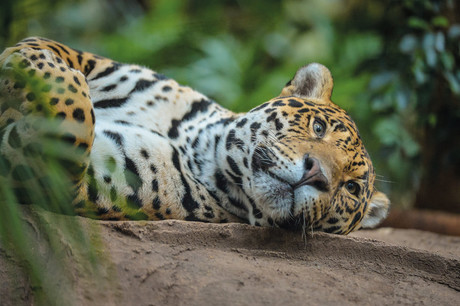
DURING THE VISIT
- Take digital cameras with you to the zoo and help the children take their own photos of the animals.
- Talk to the children as you look around and encourage them to describe what they can see. How do the animals move? How do they sound? How do they eat? Can the children smell anything? How do the animals communicate with each other? What is the enclosure like? Why might it be designed like that?
- Can the children remember any of the interesting facts they found out in their research?
AFTER THE VISIT
Use the trip as inspiration for some fun and creative activities:
Painting, collage and drawing
- Display posters and photos of the animals you saw on the walls around the art and craft area.
- Set out craft materials such as crêpe/tissue paper, feathers, buttons, glue, paints, charcoals, chalks and crayons.
- Provide junk modelling materials with scissors and tape.
- Set out a table with salt dough or modelling clay and arrange a display of toy wild animals in the centre.
- Print off examples of animal patterns, pour some paint into shallow containers and provide a selection of objects to print with.
Music and movement
- Take the children to a wide open space and move like different animals. Swing like monkeys, charge like rhinos, stomp like elephants, stalk like tigers, slither like snakes and walk tall like giraffes.
- Play different instruments and ask the children if the sounds remind them of any animals. Try playing the instruments in different ways to create different effects. For example, crashing cymbals might be connected to a rhino, while stroking a cymbal with a brush might be more representative of a snake. A fast drum beat might be reminiscent of a wildebeest running, while a slow beat might be more like an elephant plodding.
Animal poetry
- Ask the children to reflect on the visit and the animals they saw. Invite them to think of words to describe them. Prompt the children by asking them to describe how the animals looked, moved, sounded and smelled. Create a word bank using their descriptions.
- Share some animal poems.
- Help the children write some animal poems of their own using a simple frame.
Support the cause
Making children aware of conservation issues and engaging them in actively supporting the cause is a great way of promoting British values. Engage the children in a discussion about the plight of some of the animals and ask them what they think they might be able to do to help. You could:
- create conservation posters
- organise a fundraising event and use the money to sponsor an animal at the zoo
- find out how lifestyle choices affect the environment and what impact this has on animals in other parts of the world. For example, using certain products, consuming fossil fuels and throwing things away instead of recycling them.
Games
Sleeping lions. Choose two hunters. Everyone else has to lie in a space on the floor and keep absolutely still. The hunters then walk around and try to make the lions move without touching them. Any lions that move are out. The winner is the last remaining lion.
I went to the zoo (memory game). Sit in a circle and take it in turns to recite the sentence, ‘I went to the zoo and I saw…’ Each child has to say the animals that came before and add an animal of their own. The game is over when they cannot remember the list of animals any more.
More ideas
- Set up a role-play zoo with cuddly toys in enclosures. Provide a vet uniform and kit to extend the play.
- Set up small-world scenes with toy wild animals in a variety of habitats around the setting; for example, a jungle in the shrubbery outside, a desert in the sand and a river in the water tray.
- Make animal sock puppets.
- Do a measuring activity with pictures of giraffes of different heights.
BOOK CORNER
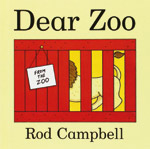 Dear Zoo by Rod Campbell
Dear Zoo by Rod Campbell
Classic lift-the-flap book that will get the children guessing.
Zoo by Anthony Browne
Useful for introducing younger children to issues related to captivity.
When Lulu Went to the Zoo by Andy Ellis
A little girl feels sorry for the animals in the zoo so she releases them and takes them home with her.
Oi! Get Off Our Train by John Burningham
A little boy takes a train ride in his sleep and meets all kinds of endangered species along the way.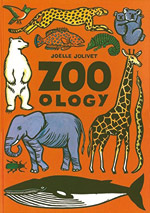 Zoo-ology by Joelle Jolivet
Zoo-ology by Joelle Jolivet
Very large book featuring almost 400 species of animal. Packed full of colourful illustrations and interesting facts.
Actual Size by Steve Jenkins
View a crocodile’s head, a gorilla’s hand, a shark’s tooth and a 9mm-long fish at actual size.
Counting Lions by Katie Cotton and Stephen Walton
Vital information about and exquisite black-and-white illustrations of endangered animals.
The Wonder Garden by Kristjana S Williams and Jenny Broom
A stunning exploration of five habitats, including a desert and coral reef – and the animals that live within them. 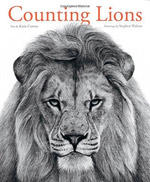 Zebedee’s Zoo by Giles Milton and Katharine McEwan
Zebedee’s Zoo by Giles Milton and Katharine McEwan
Rhythmic rhyming picture book about the night-time party antics of a bunch of zoo animals.
First Encyclopaedia of Animals by Paul Dowswell
Colourful and informative information book.
First Animal Encyclopaedia by DK Publishing
Very good information book with big photos.
Songs and rhymes
My First Oxford Book of Animal Poems by John Foster
A large selection of poems about all kinds of animals.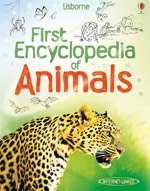 The Carnival of the Animals by Jack Prelutsky and Mary GrandPre
The Carnival of the Animals by Jack Prelutsky and Mary GrandPre
A beautifully illustrated and colourful picture book.
Walking Through the Jungle and The Animal Boogie by Debbie Harter
Two sing-a-long books with animated CDs.
Going to the Zoo See www.youtube.com/watch?v=vhxttDEv_I8
Marianne Sargent is a writer specialising in early years education and a former Foundation Stage teacher and primary and early years lecturer









